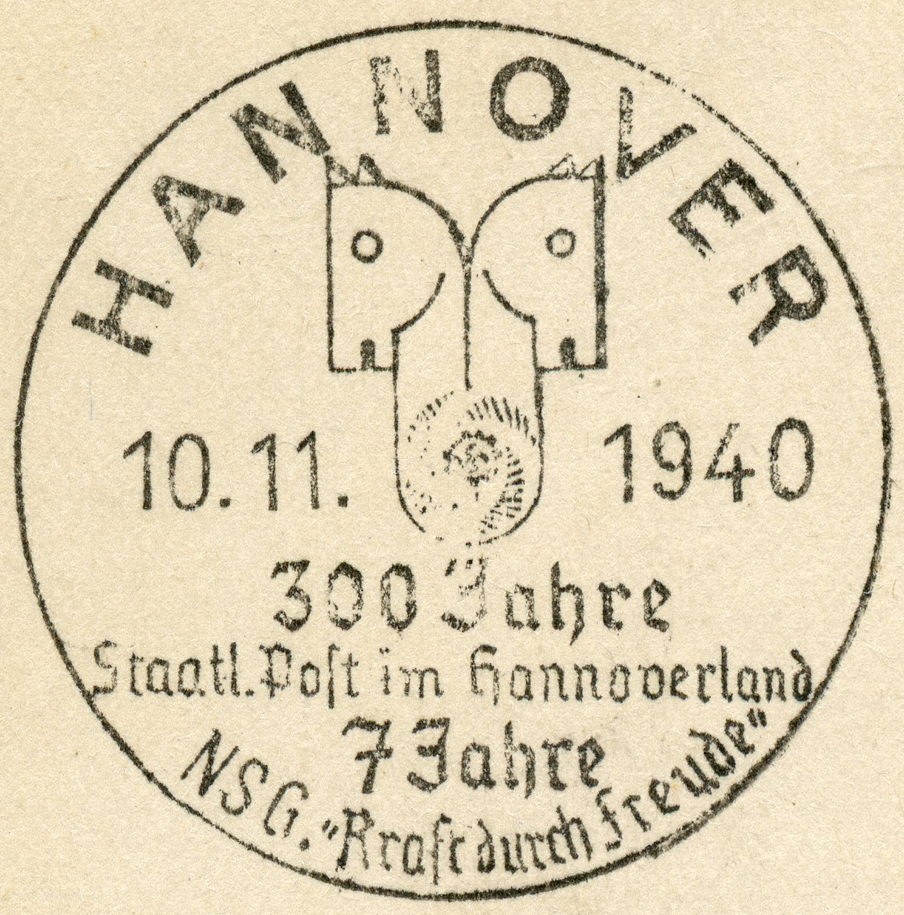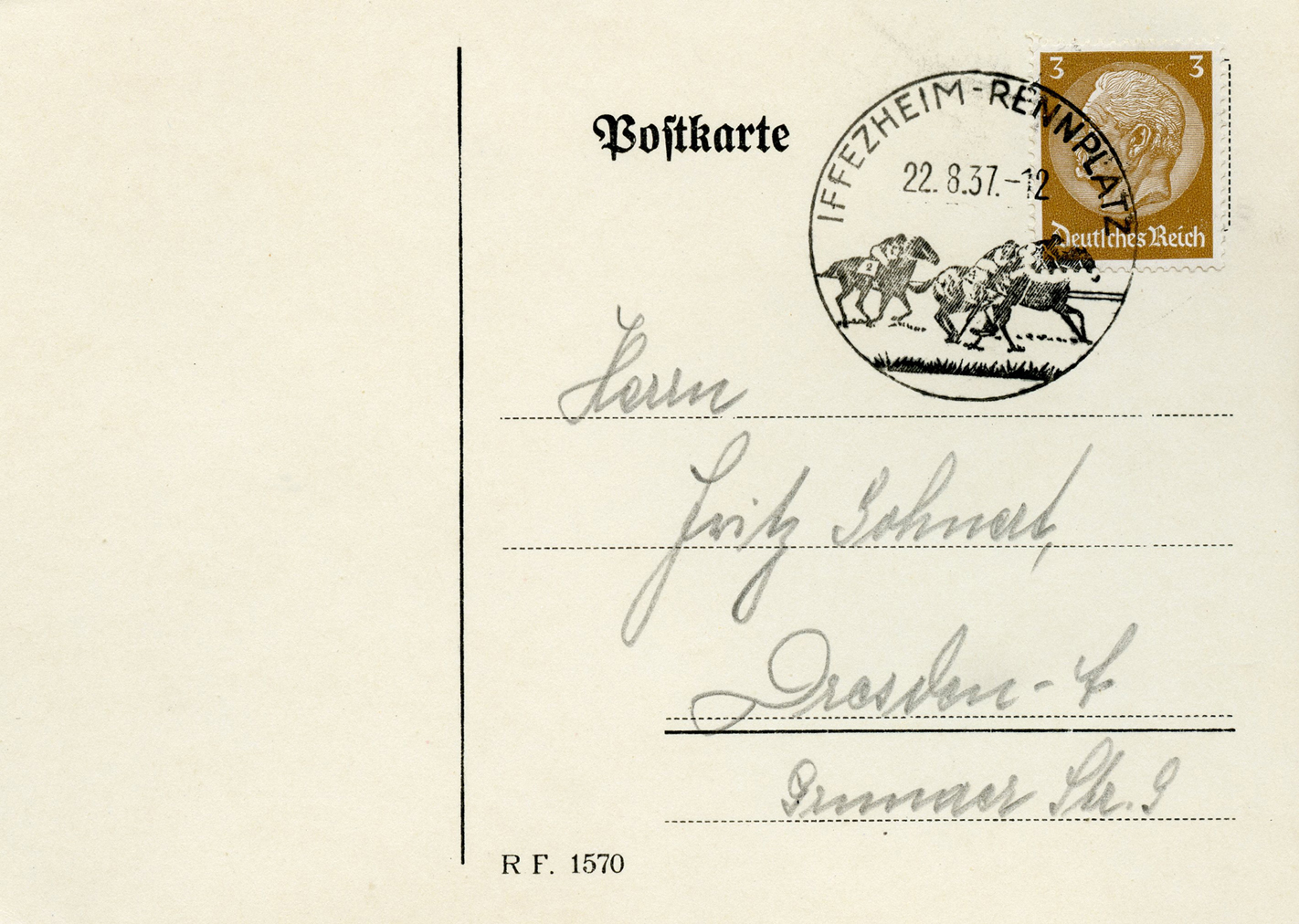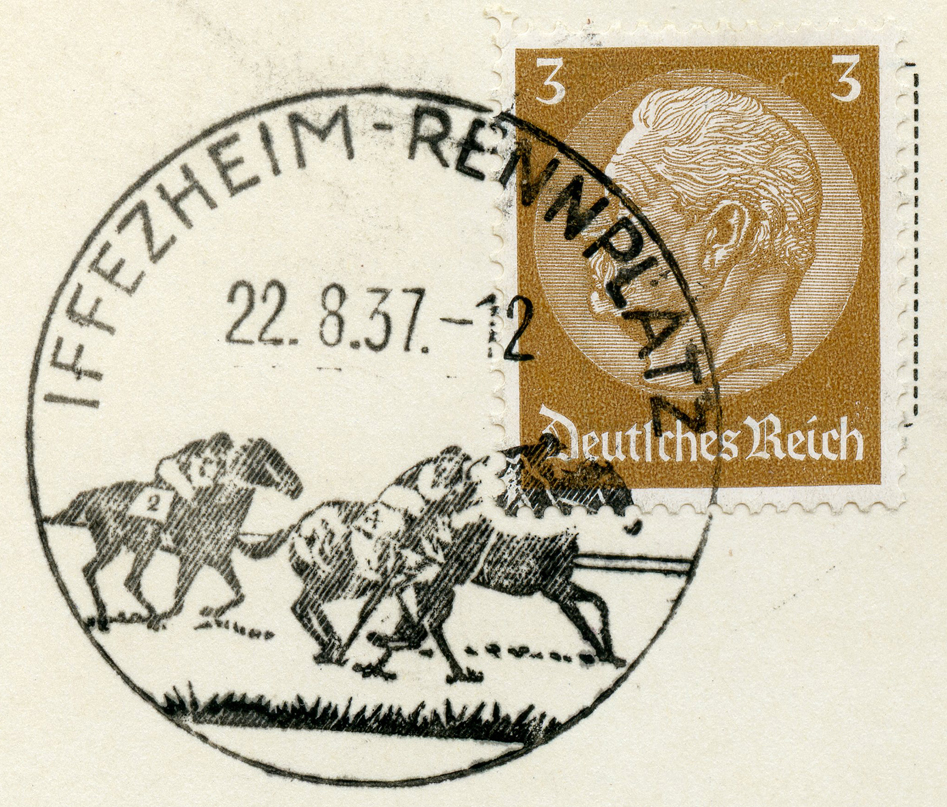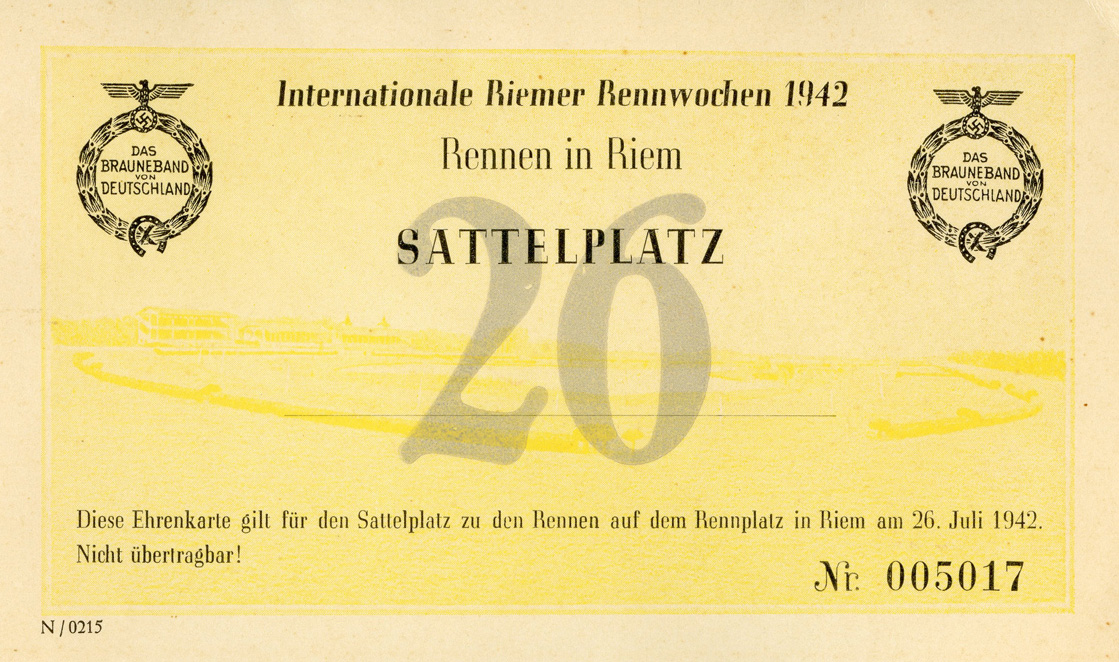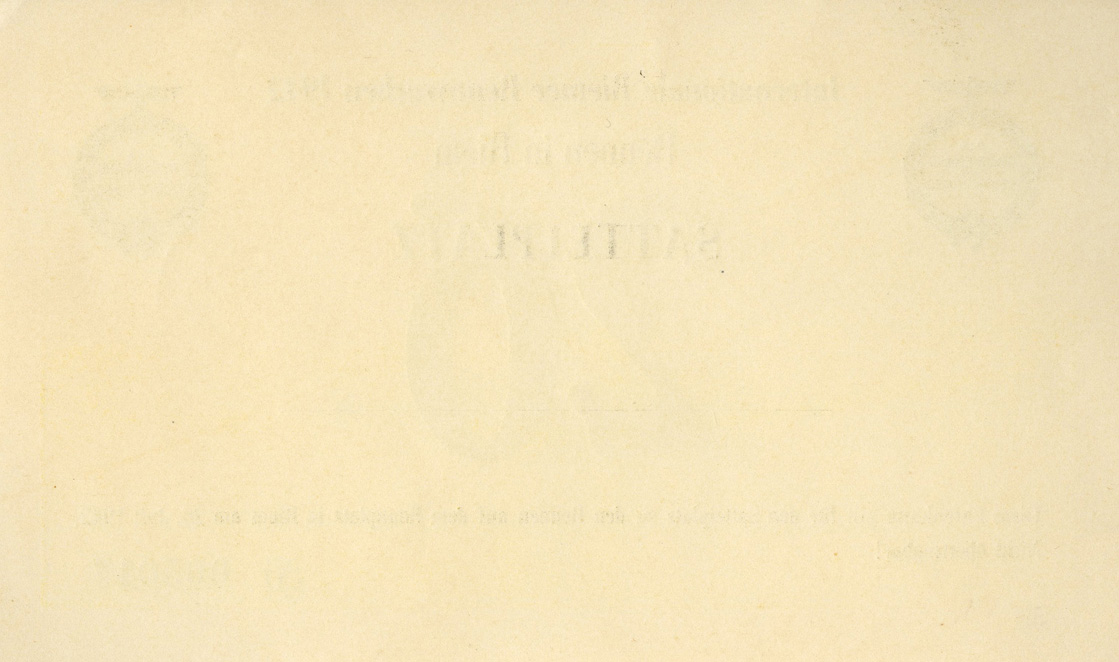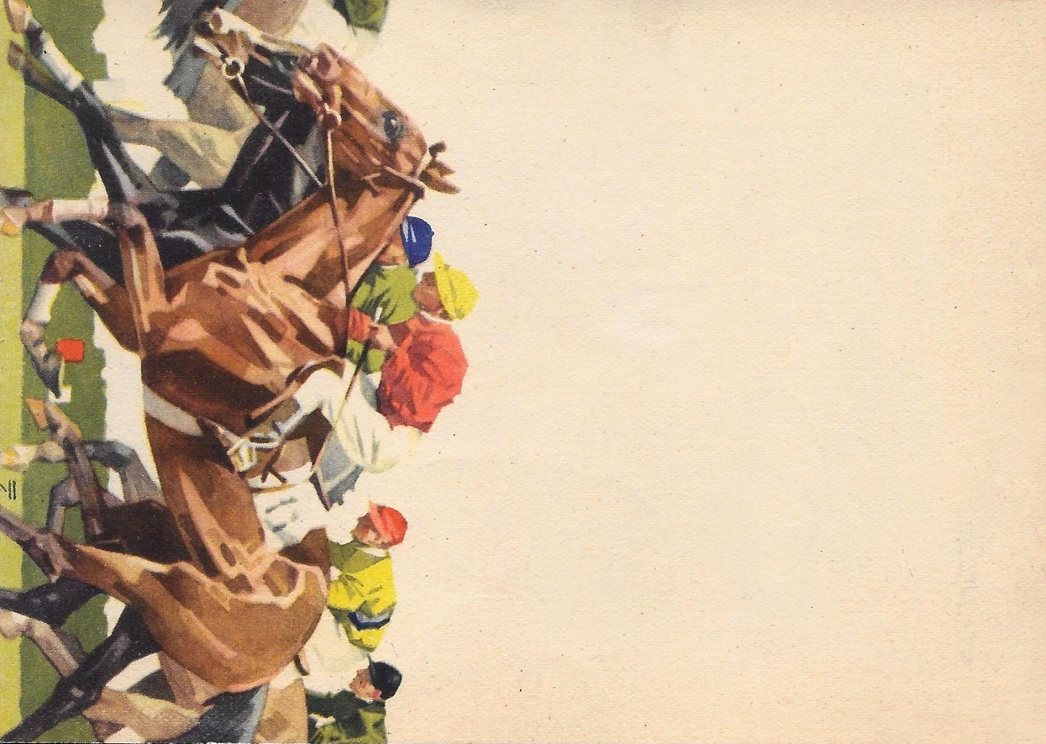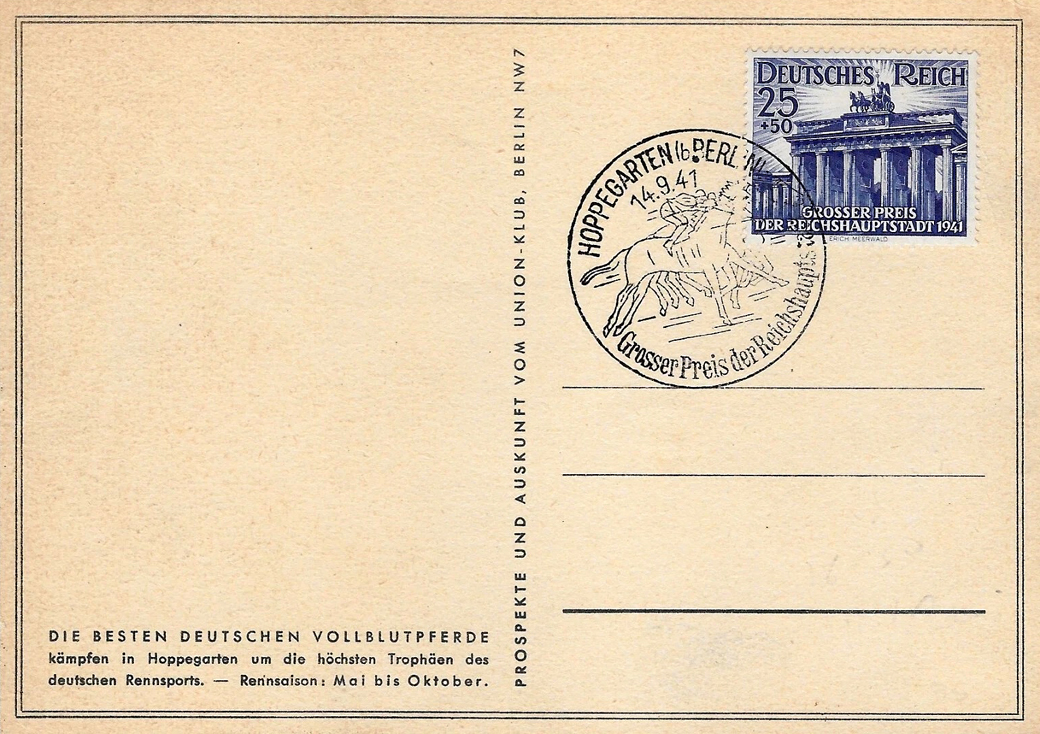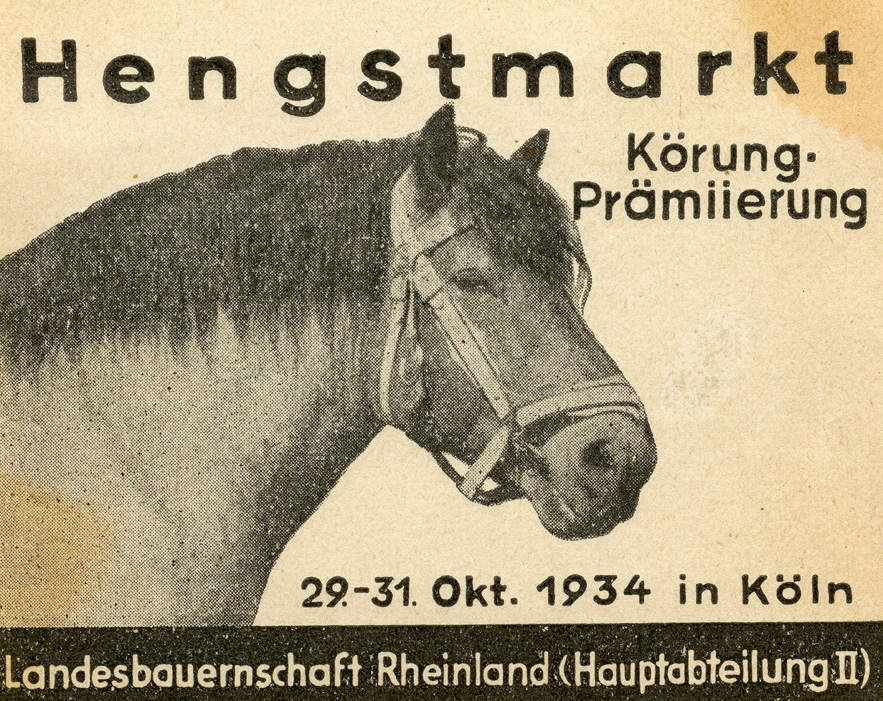




[Above: Wow, amazing shot. I'd love to know the story behind this one. Maybe it is stuffed? Some sort of a bear suit? Is this (and the two photos below) photoshopped?]

[Above: A bear paratrooper. Things are getting stranger and stranger.]

[Above: A bear in a trench with two paratroopers and a mortar.]

[Above: An ultra rare breed of Russian bear, known for its friendliness. Due to this unfortunate trait it is now extinct...]



[Above: They're in love...]
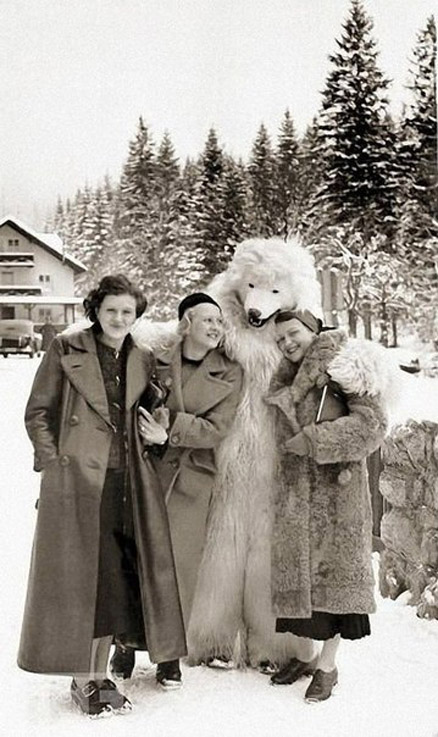
[Above: Eva Braun-Hitler with the Rare-Bear!.]

[Above: The Germans should have formed a special Waffen-SS squad that fought in these bear suits! Imagine what the Russians would have thought with a few hundred of these bears holding assault rifles rushing their positions.]






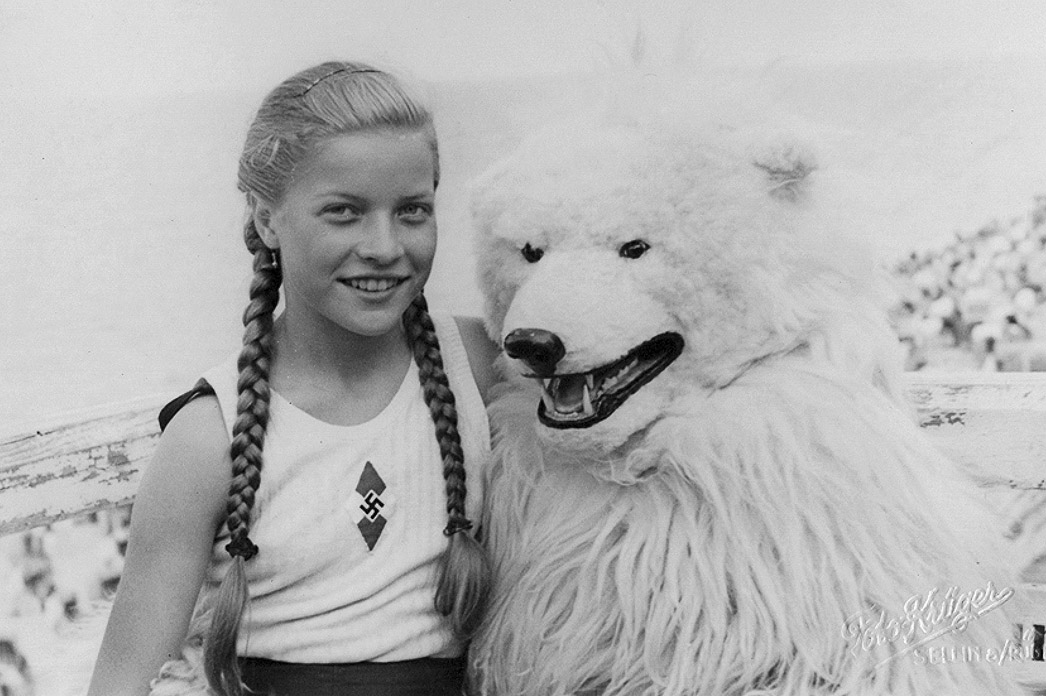







[Above: Unlike the polar bears above, these two are clearly fakes.]

[Above: Here's a 1937 Berlin Christmas cancel with a very pissed off bear.]

[Above: Okay, wrong kind of bear, but close enough!]

[Above: 'Die Wiege des Teddy Bären' (The Cradle of Teddy Bears). This cancel is from Giengen, which has the famous 100-year-old Steiff Teddy Bear factory.]

[Above: This Steiff Teddy Bear ad was found in a 1943 edition of Illustrierter Beobachter (Illustrated Observer).]
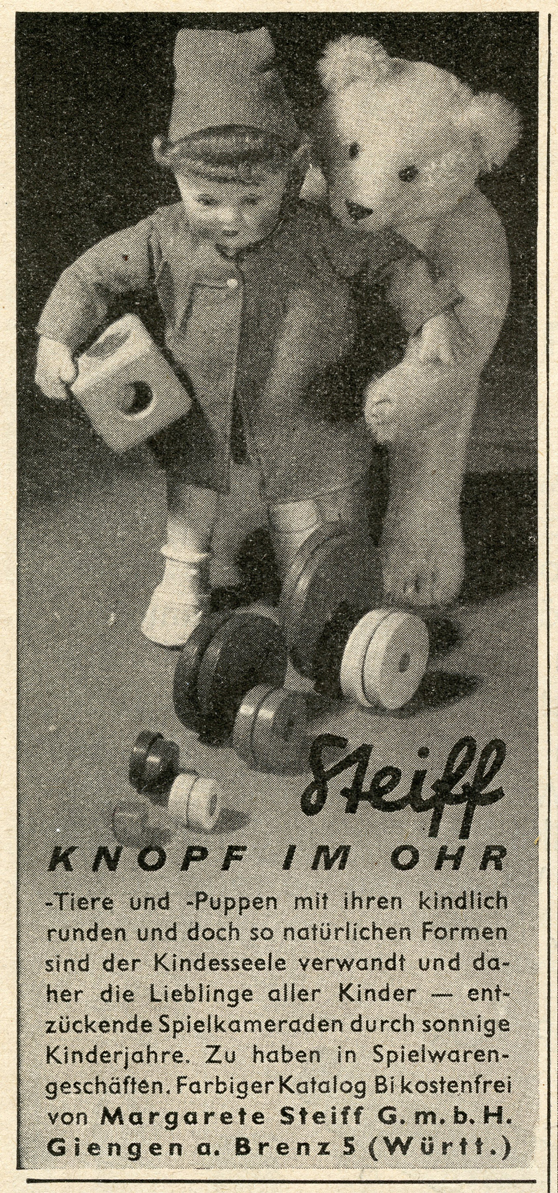
[Above: This Steiff Teddy Bear ad was found in the December 7, 1939 edition of Berliner Illustrirte Zeitung, #49.]

[Above: Here's a bear and a monkey all in one picture, this is probably the first and last time I'll type up this description.]

[Above: Close-up.]

[Below: A more detailed version, although cropped]






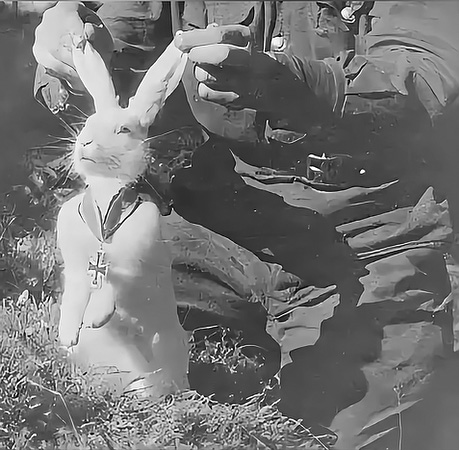
[Above: This solemn rabbit has won the Knight's Cross!]
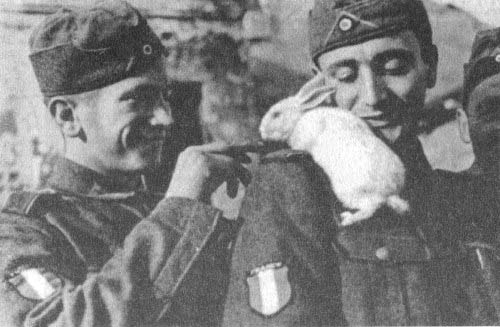
[Above: French Waffen-SS volunteers find a friend.]

[Above: Here's a bonus Easter Bunny rabbit for ya!]

[Above: And another!]

[Above: This is a small unit made postcard from somewhere in Russia.]


[Above: Reinhold Löw playing with a squirrel friend]

[Above: Reinhold Löw playing with a squirrel friend]

[Above: The horrid mud of Russia.]

[Above: Like quicksand...]
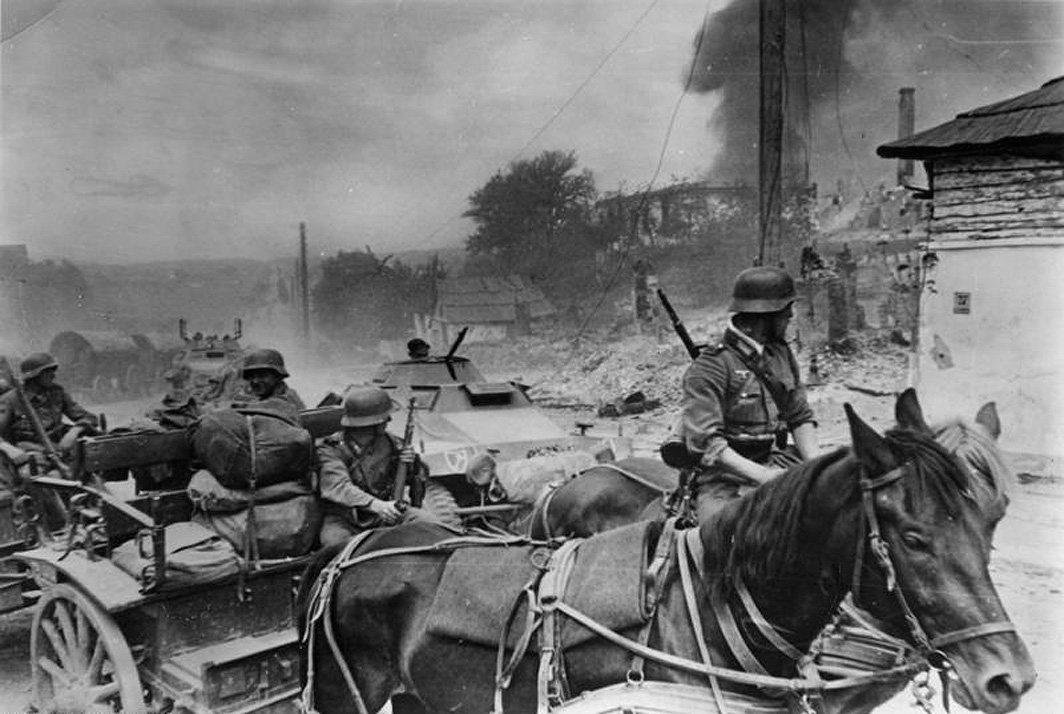
[Above: This picture, from the Bundesarchiv, is titled 'Russland, bespannte Artillerie in brennendem Ort' (Russia, horse-drawn artillery in burning town).]







[Above: A sad picture of a horse lost on a smokey battlefield. This is from a book called 'Mit Hitler im Polen' (With Hitler in Poland). The original description is 'A mute witness of senseless Polish destructiveness'.]

[Above: A horse walks into a bar, the bartender leans forward and says: 'why the long face?']




[Above: I'd heard of horse gasmasks but never horse helmets! Those Germans thought of everything...]

[Above: A little but of 'spiritual nourishment'.]



[Above: Dispatch rider on the Eastern Front, 1941.]




[Above: The reverse of this postcard has this information:
'Unsere Waffen-SS
Gute Freunde
SS-Kriegsberichter Möbius
Herausgegeben im Einvernehmen mit dem SS-Führungshauptamt'
(Our Waffen-SS
Good friends
SS war correspondent Möbius
Published in agreement with the Central Office of the SS Leadership).]






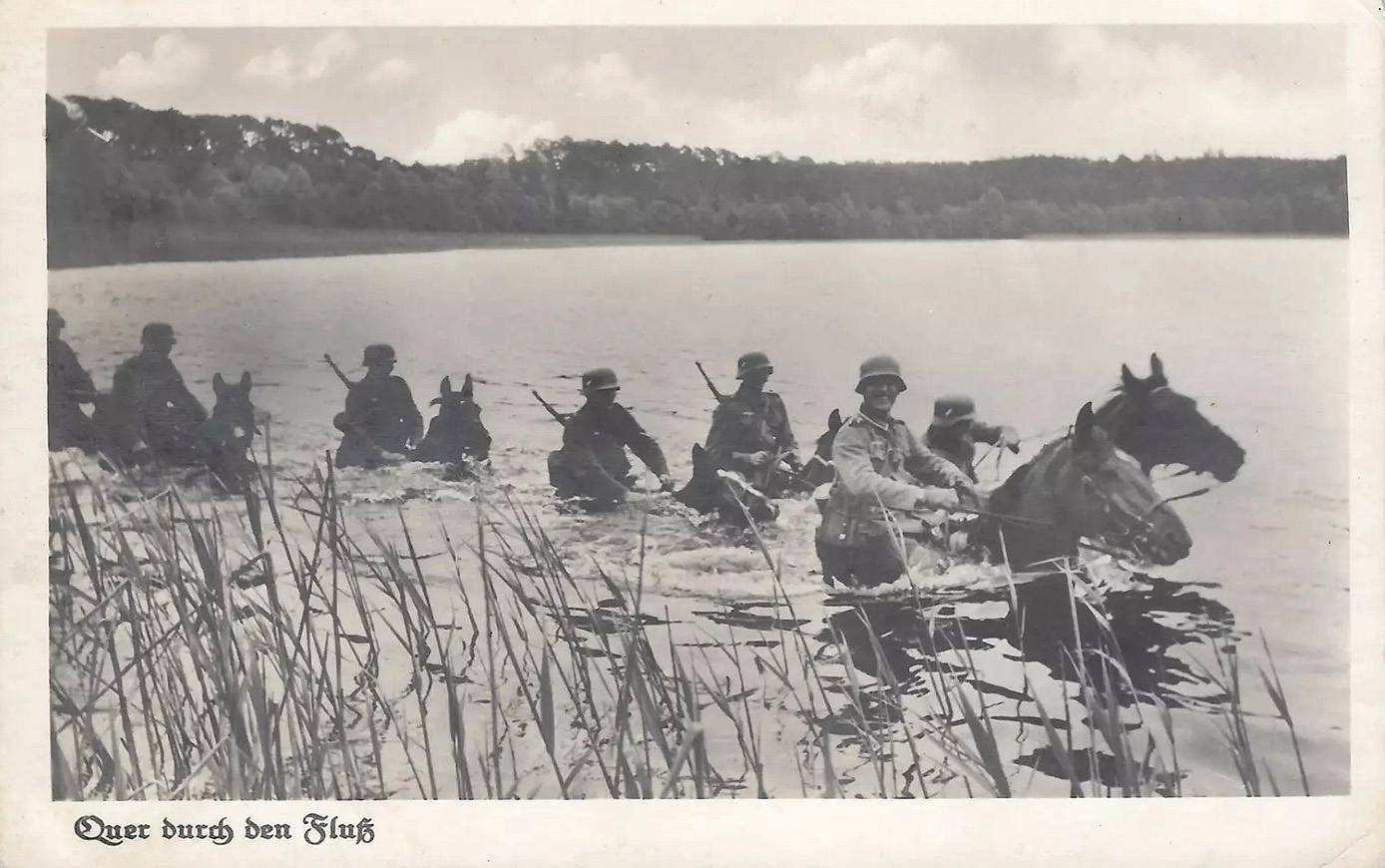
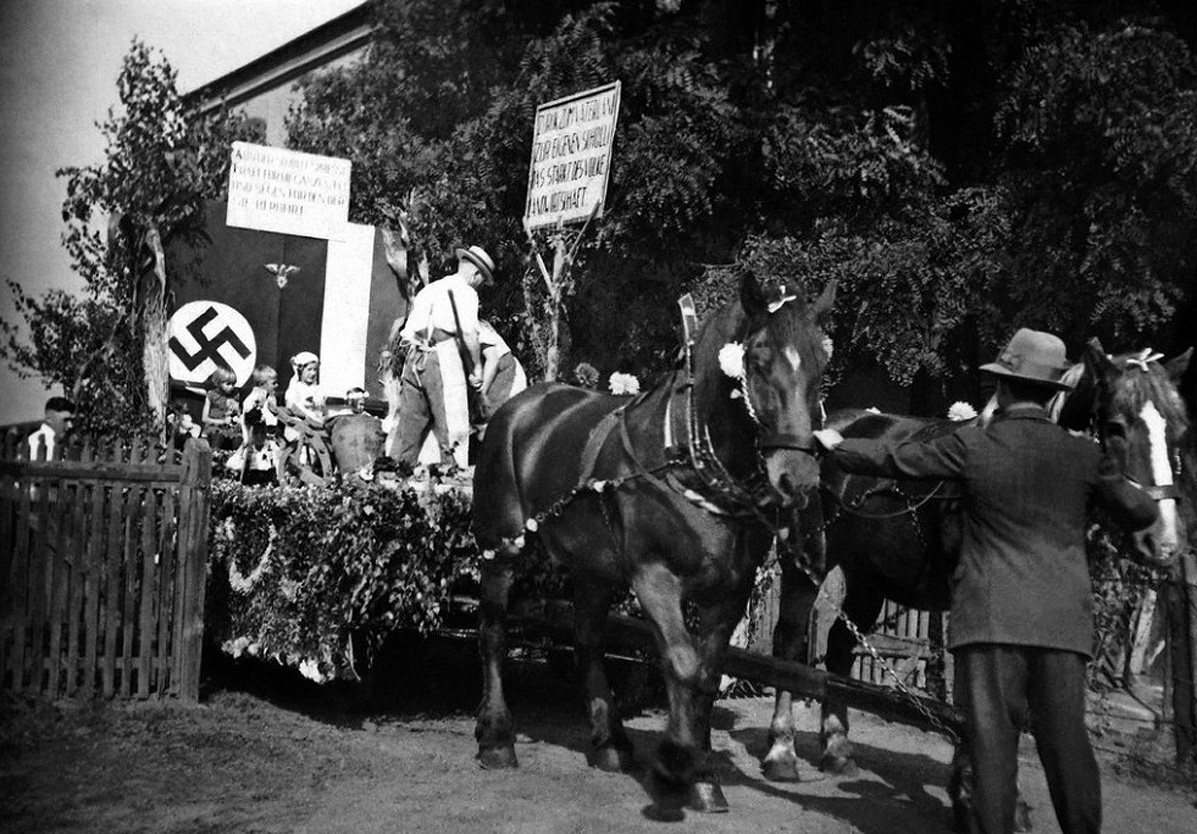










[Above: Waldemar Fegelein, brother of the traitor Hermann, seen here wearing the 'SS-Hpt.-Reitschule München' sleeve cuff.]



[Above: This postcard is labeled 'Kampf der SS-Gebirgsdivision "Nord" in Karelien - Verwundetentransport auf Sumpfschlienen' (Battle of the SS Mountain Division "North" in Karelia - Wounded transport on swamp slopes)]

[Above: This postcard shows Ernst Röhm reviewing SA men in Breslau, Germany in 1933]
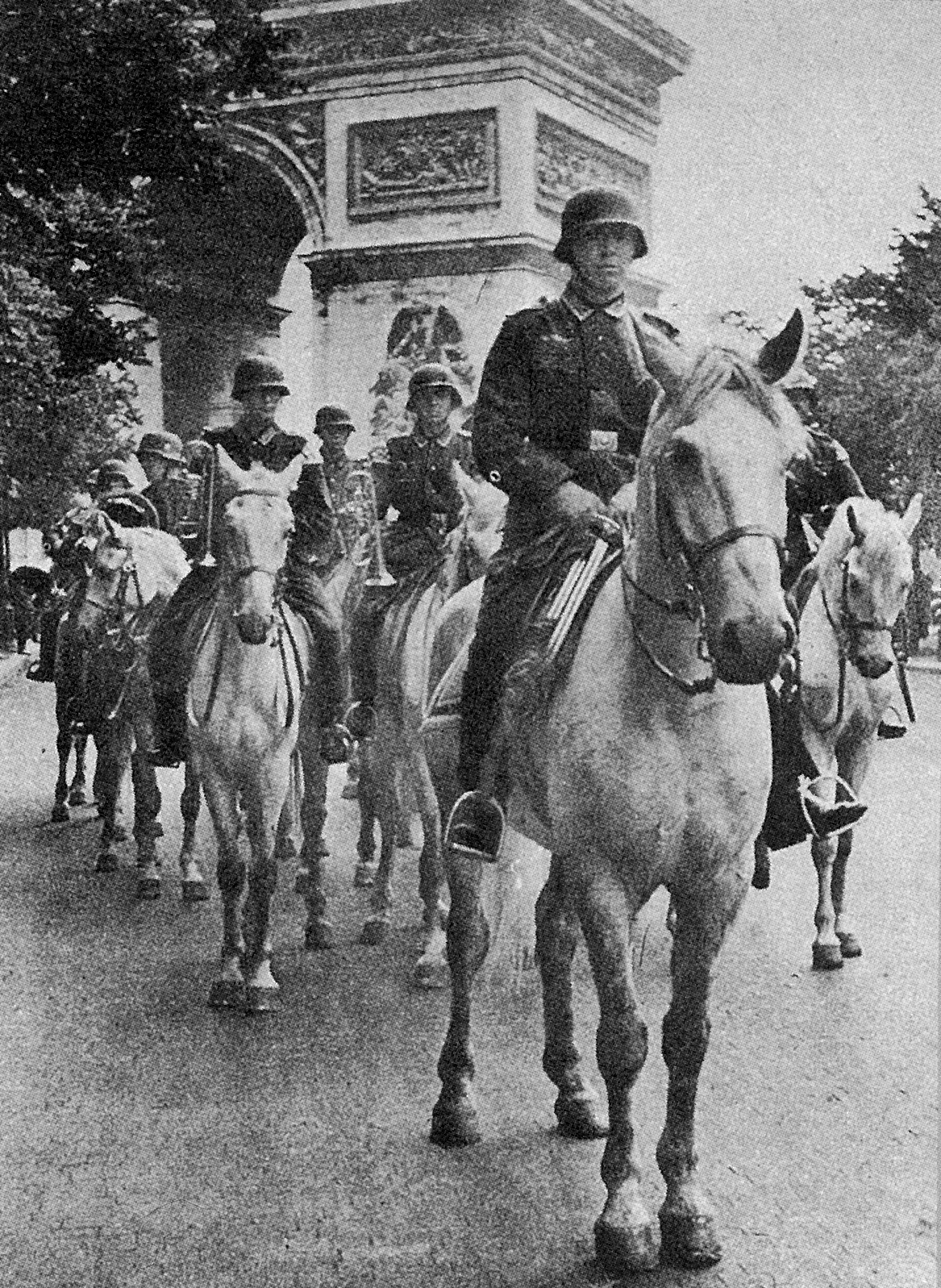
[Above: Mounted band awaiting the parade on the Avenue Foch, with the Arch of Triumph in the background.]

[Above: This postcard says 'Was hilft mir mein Schätzle, wenn's bei mir nicht bleibt' (What's the use of my sweetheart if he doesn't stay with me?)]











[Below: Men of the SS-Division 'Florian Geyer' - 1/5]

[Below: Men of the SS-Division 'Florian Geyer' - 2/5]

[Below: Men of the SS-Division 'Florian Geyer' - 3/5]

[Below: Men of the SS-Division 'Florian Geyer' - 4/5]

[Below: Men of the SS-Division 'Florian Geyer' - 5/5]

[Below: 'Quer durch den Fluß' (Across the River)]

[Below: Wehrmacht cavalry looking on.]
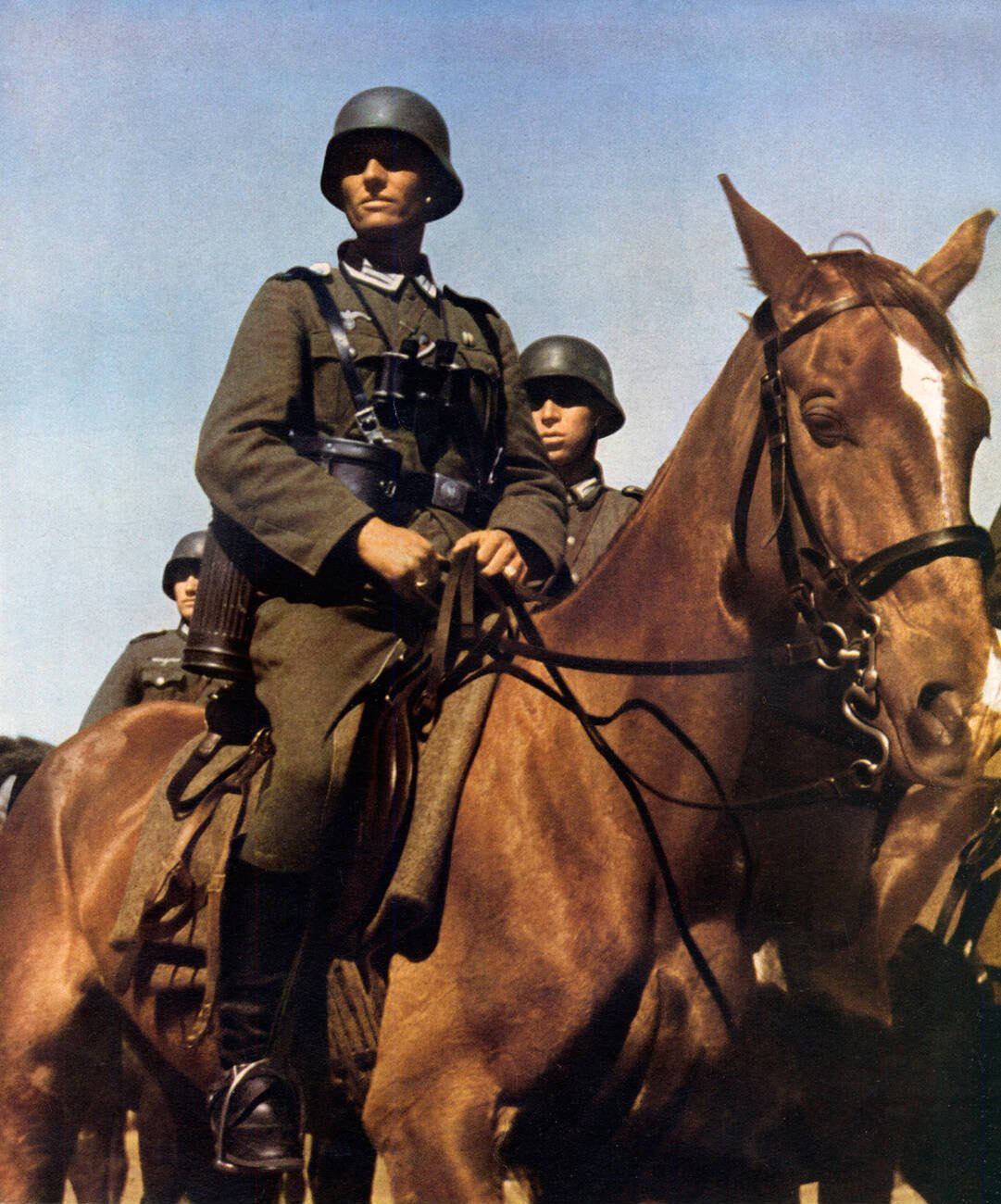
[Below: This eagle's claw represents the Greif Division of the Wehrmacht.]
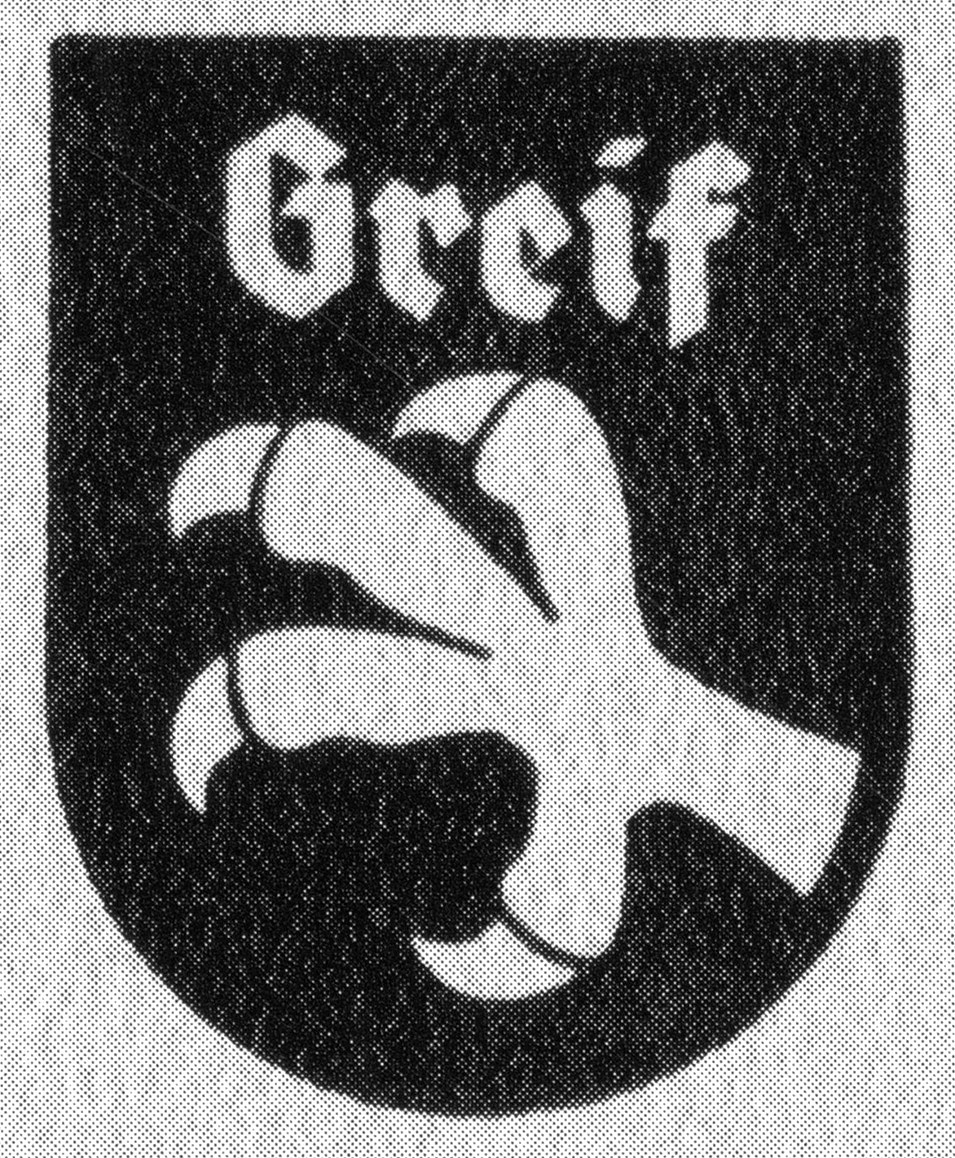
[Below: A Greif Division supply wagon has overturned, somewhere on the eastern front, 1940-41.]
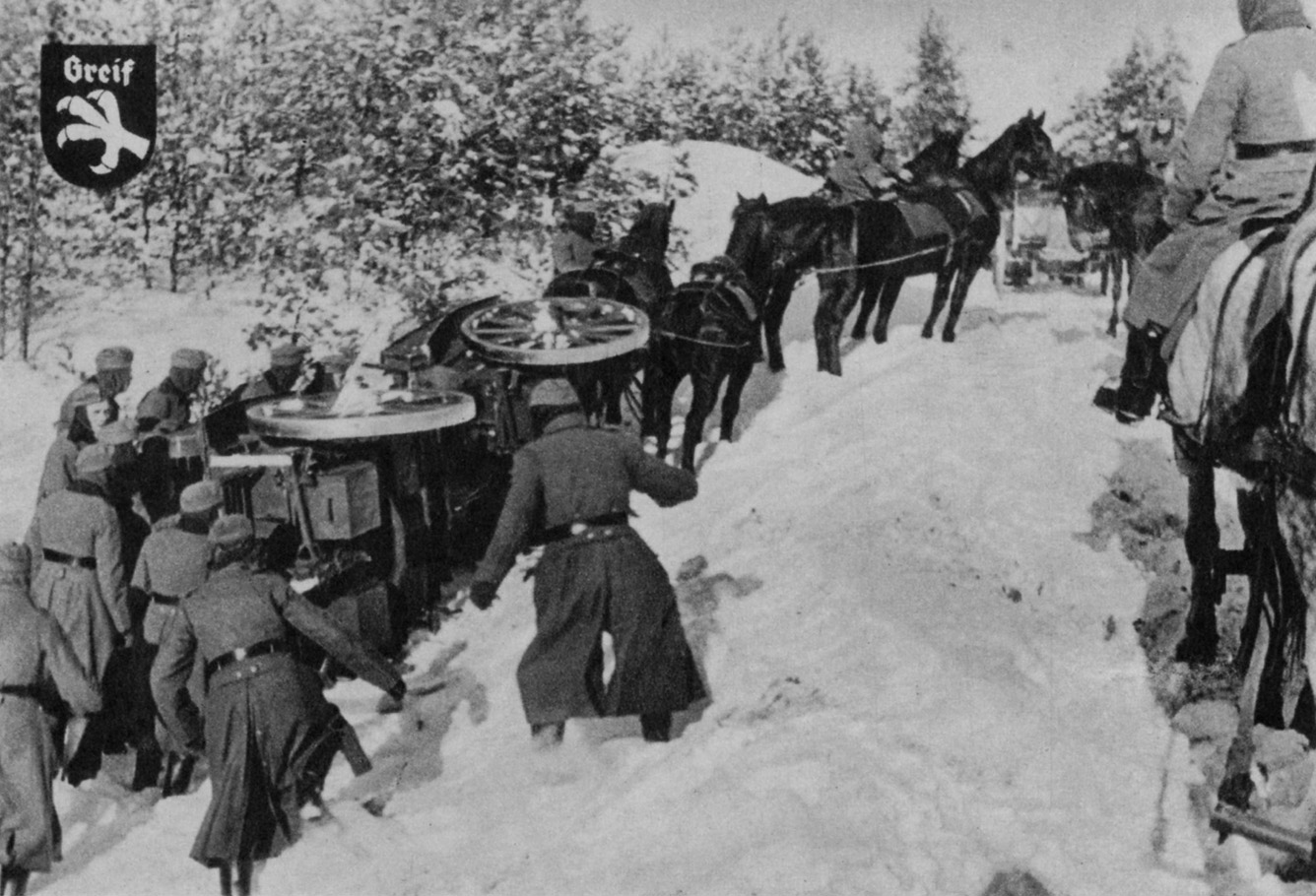
[Below: A Greif Division on the eastern front, 1940-41.]

[Below: A spectacular looking rally of the Greif Division.]

[Below: Greif Division pin.]

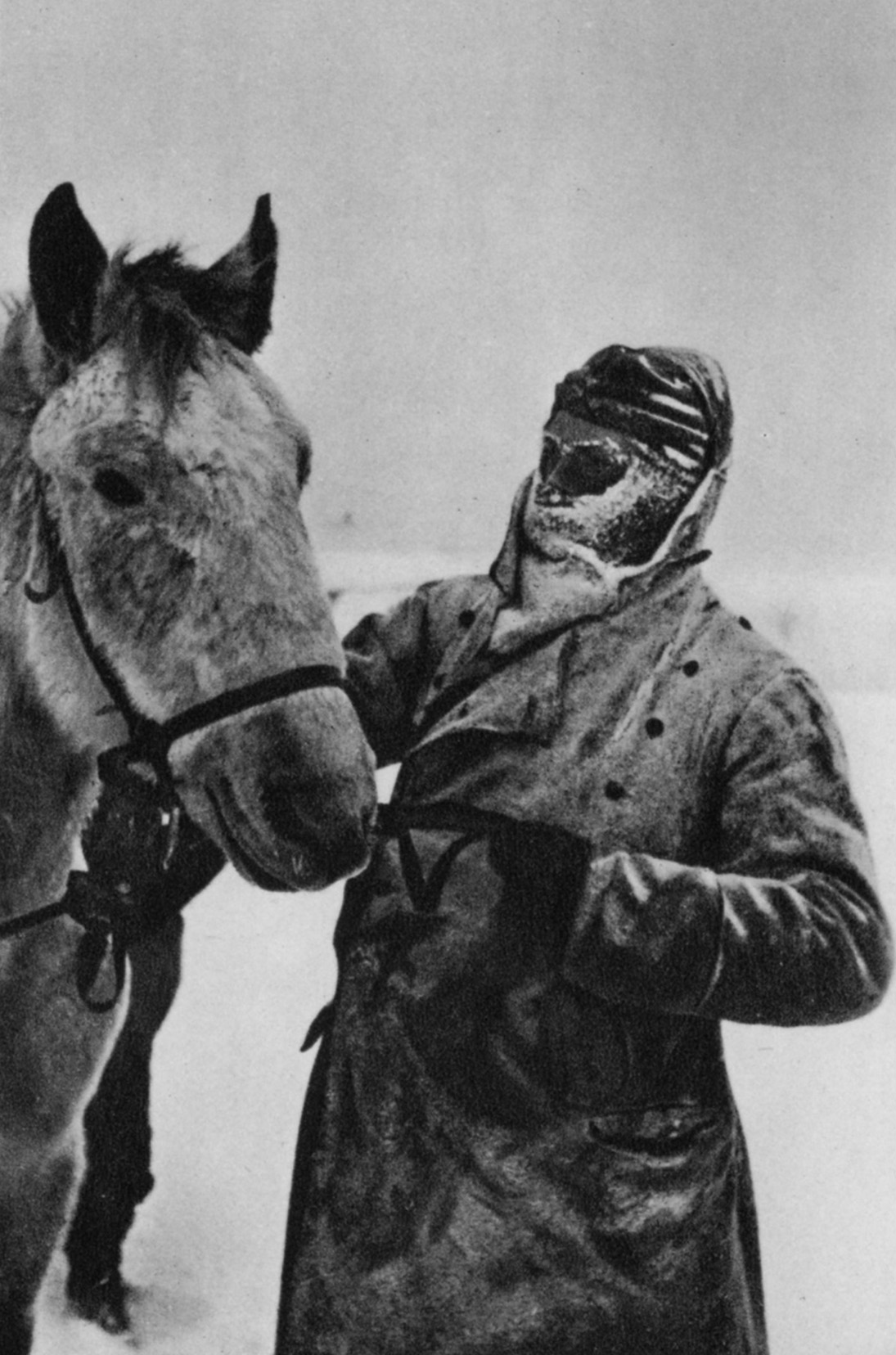
[Below: A supply column in an ice storm.]
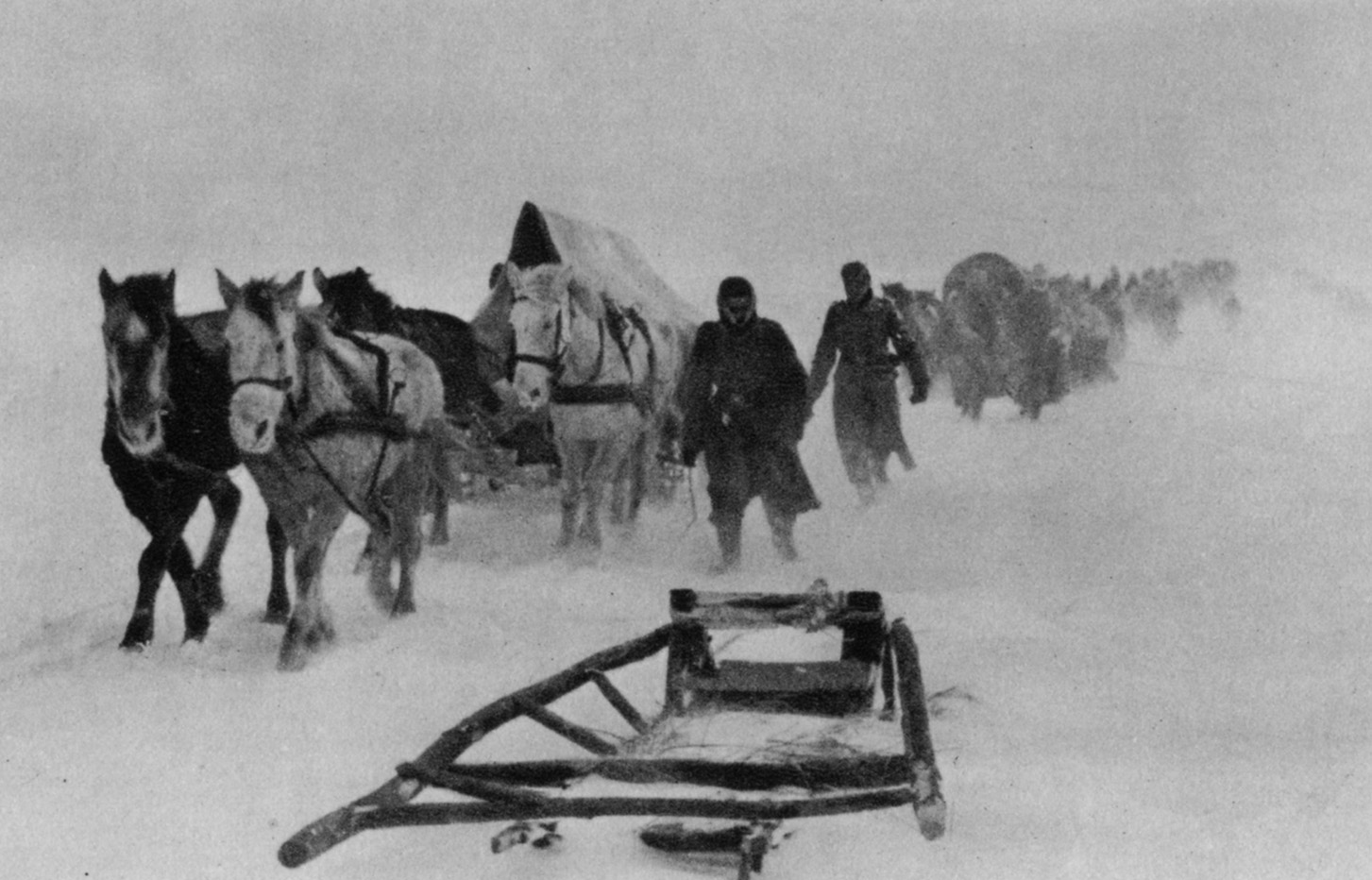
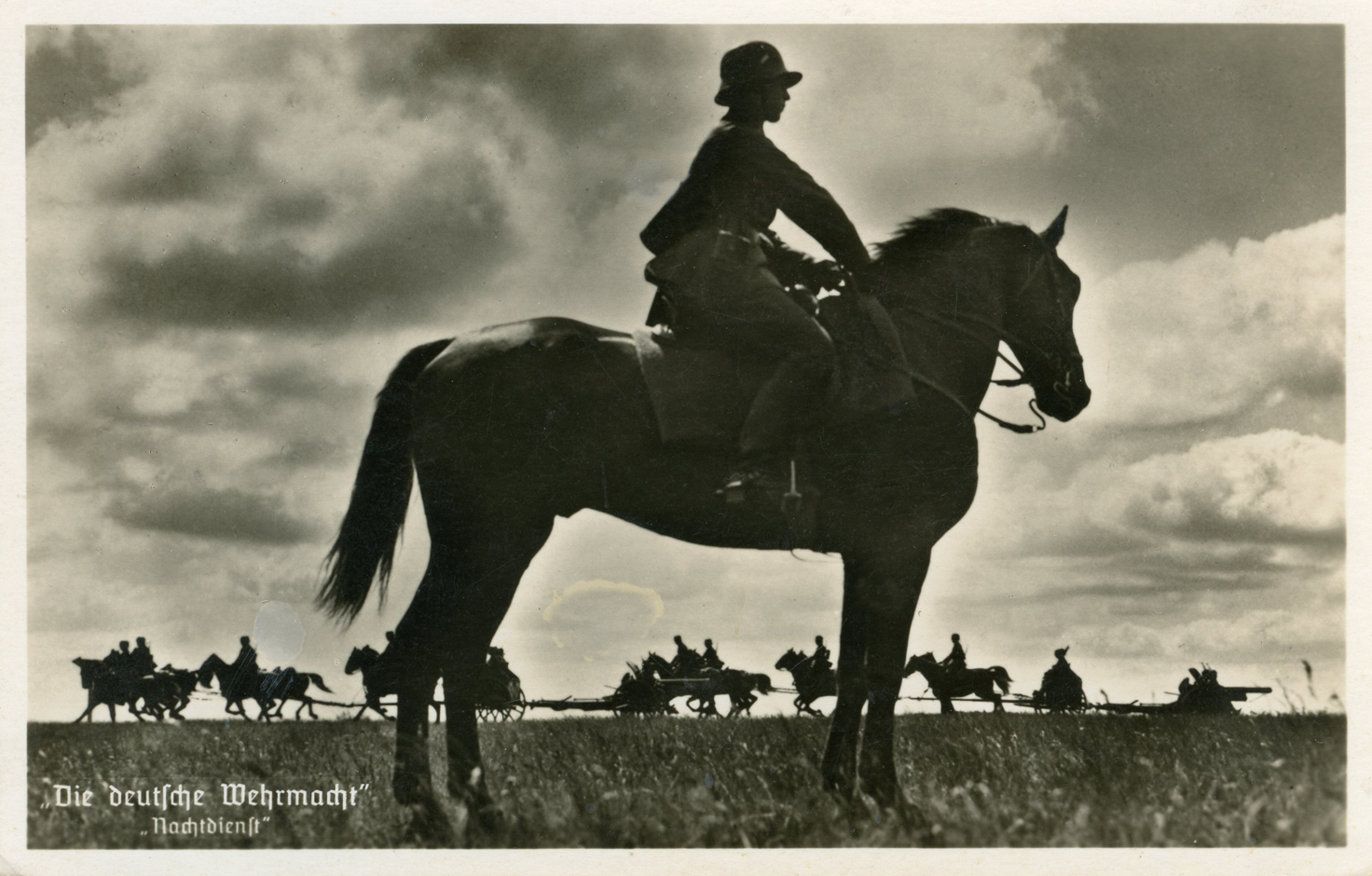
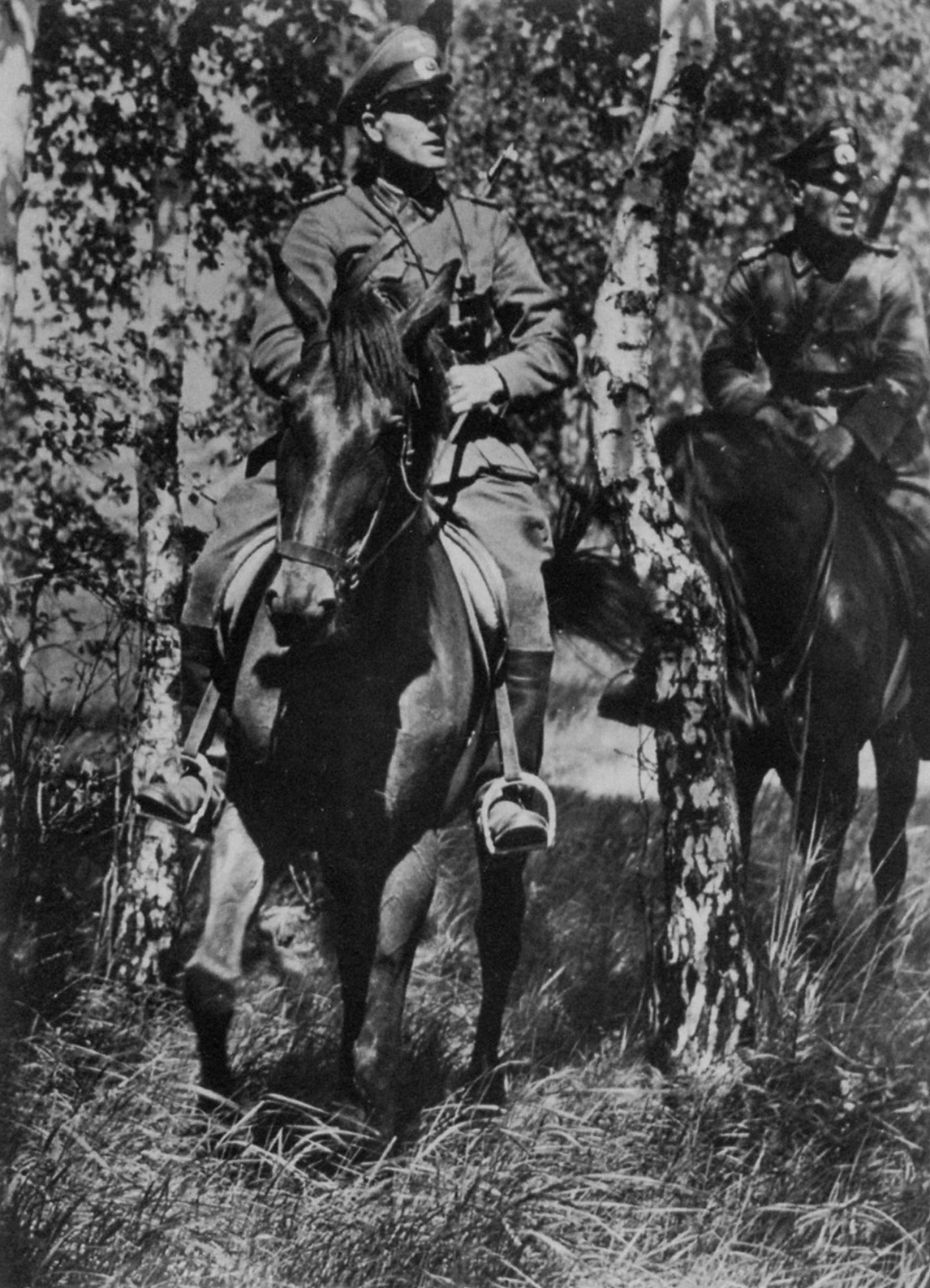
[Below: German troops are welcomed into Czechoslovakia.]
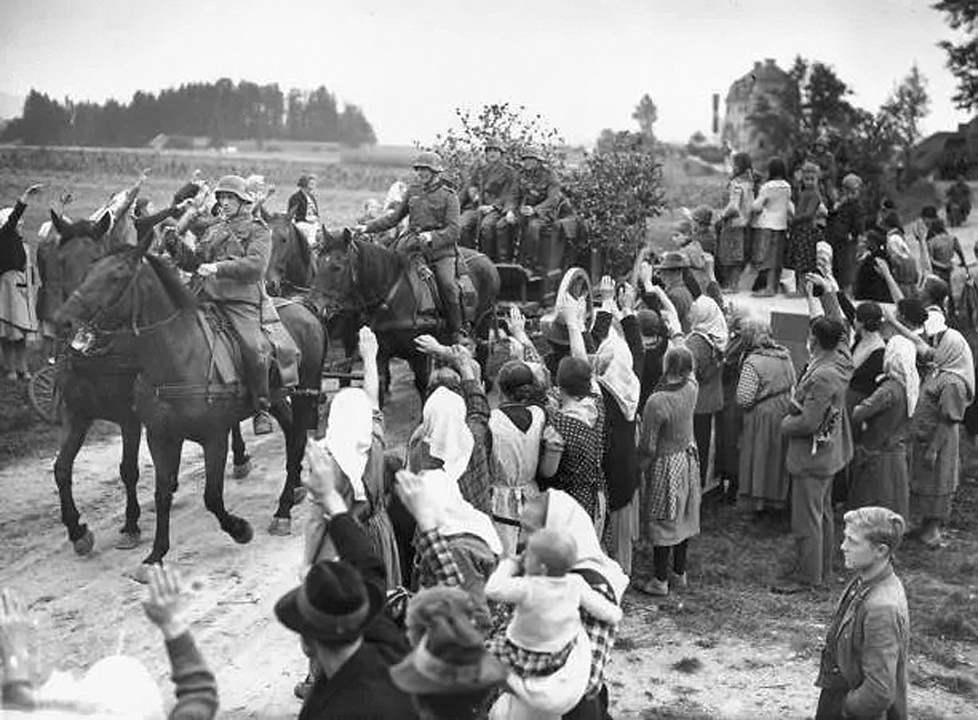

[Above: 'Allgemeiner Wegweiser für Jede Familie' (General Signpost for Every Family).]

[Above: A German war horse on the Eastern Front!]


[Above & below: Postcards - although very different printings.]



[Above: Front. 'Deutsche Künstler und die SS - An der Schwemme' (German artists and the SS - At the Pond). Artist postcard no. 9412 from Adolf Dahle, published by order of the Reichsführer-SS, SS-Hauptamt, Berlin.]

[Above: Reverse.]

[Above: Postcard - 'No obstacle is insurmountable' - painting by Professor Elk Eber, graphic arts institutes, F. Bruckmann K. G., Munich]
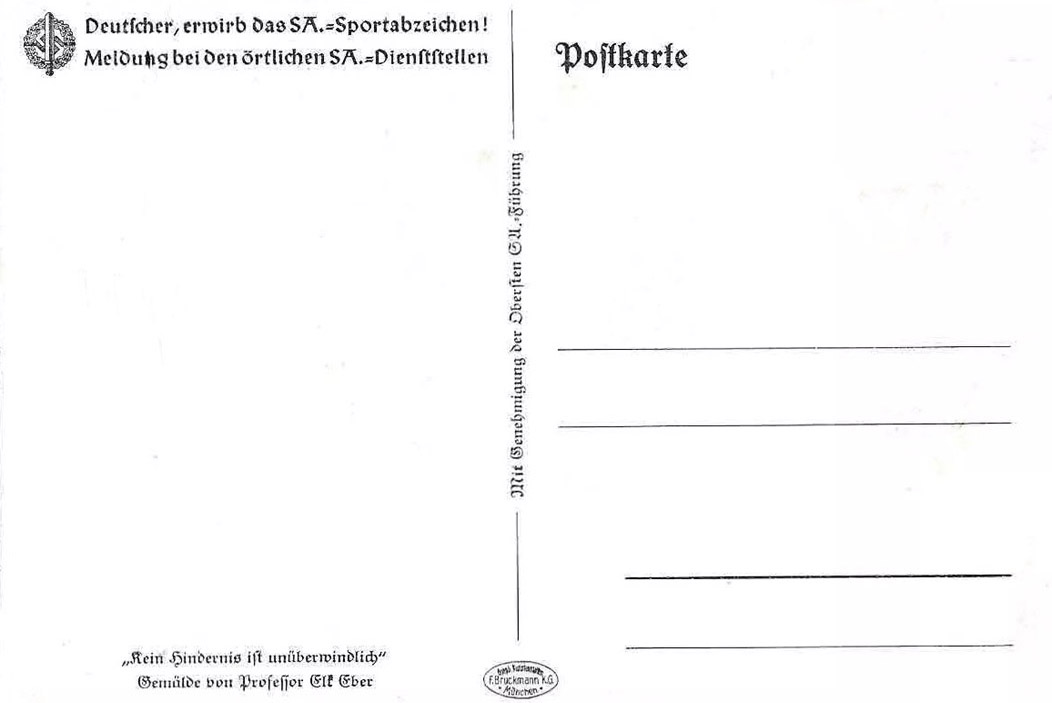
[Above: Reverse]

[Above: 'Schönheitspflege' (Beauty care)]
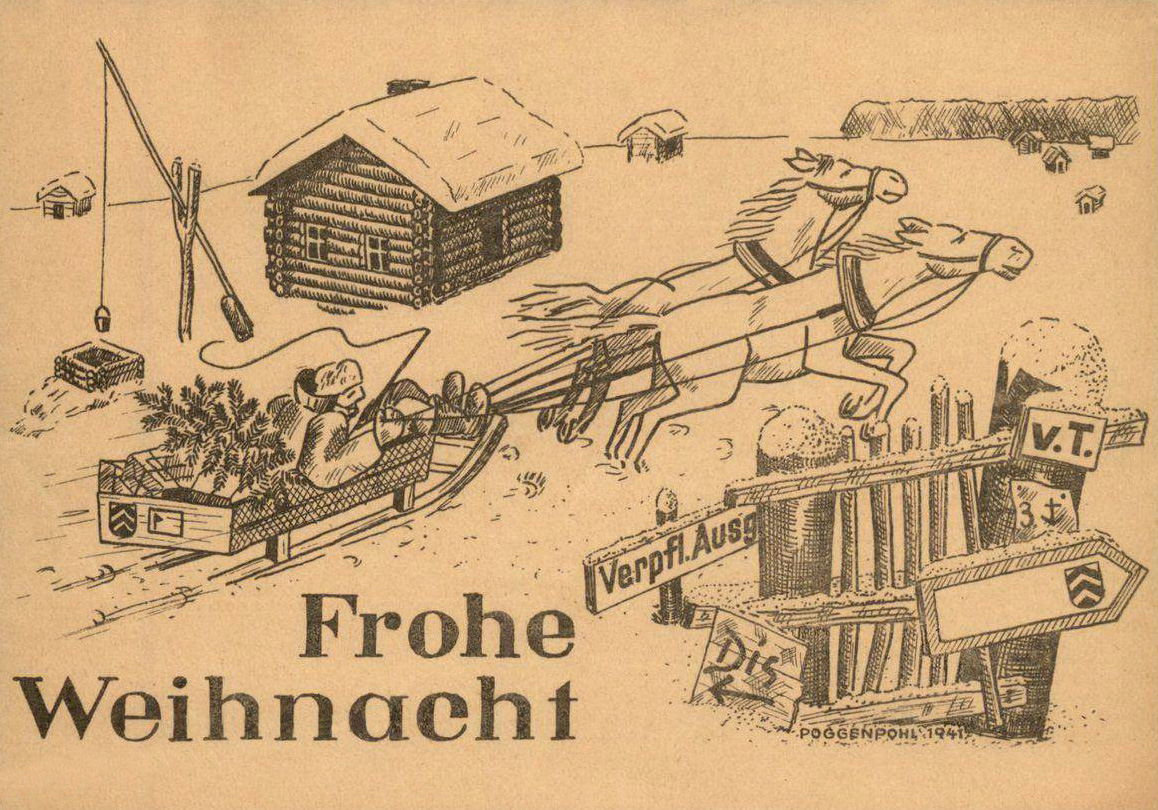
[Above: A Feldpost Christmas greetins postcard from 1941]

[Above: This postcard says 'SA-Wettkämpfe' (SA Competitions) in the Berlin Olympic Stadium, August 13th, 14th and 15th, 1937, the artist is named Flechtner]






[Above: This postcard says '102. Cannstatter Volksfest Stuttgart, 18.-27.Sept.1937' (102nd Cannstatt Folk Festival Stuttgart)]

[Above: Postcard from April 1938. Front.]

[Above: Postcard from April 1938. Reverse.]




[Above: This postcard is titled 'Cavalry Crossing a River in Poland' and the proceeds went to the a fund for war victims.]

[Above: This postcard is titled 'German Cavalry Patrol in Russia' and the proceeds went to the a fund for war victims.]

[Above: 'The Dispatch Rider' - drawing by Ahlers, publisher Erich Gutjahr Bildverlag, Berlin]

[Above: This postcard doesn't show a horse but since it goes with this set I put it here.]

[Above: Postcard.]

[Above: This postcard shows a work by the German artist Adolf Wissel.]


[Above: This souvenir sheet celebrates the June 1936 '3rd Race for the Brown Ribbon in Munich-Riem'. It says: 'Das braune Band von Deutschland' (The Brown Ribbon of Germany)]

[Above: The above souvenir sheet is watermarked with swastikas. This is the reverse of the sheet where you can see the watermark clearly.]

[Above: Here's an example of the souvenir sheet canceled during the 1936 Olympics]

[Above: Here's an example of the souvenir sheet sent through the mail]

[Above: Close-up of stamp and cancel]

[Above: Back of envelope showing special ink stamp]

[Above: Close-up of special ink stamp]

[Above: Here is the 1936 sheet above, except it's been overprinted the next year in August 1937 for the '4th Race for the Brown Ribbon in Munich-Riem']

[Above: Close-up]

[Above: 1936 Munich summer Olympics official festival card. It says: 'Das braune Band von Deutschland' (The Brown Ribbon of Germany).]





[Above: Same cancel as that seen above/right, except a variation in art.]









[Below: This envelope's cancel, from September 13, 1935, advertises 'Celler Hengstparade' (Celler Stallion Parade)Celle is a town and capital of the district of Celle in Lower Saxony, in north-central Germany. The horse parade is still taking place today.]

[Below: Close-up.]

[Below: Close-up of a cancel from the year before, in 1934.]





[Below: Strength Through Joy cancel from November 10, 1940.]
[Below: Postcard with rare horse racing cancel from August 22, 1937.]
[Below: Close-up.]


[Below: 1943 stamp sheet. Click to enlarge.]
[Below: 1943 stamp sheet. Click to enlarge.]
[Below: 1944 stamp sheet. Click to enlarge.]
[Below: 1944 stamp sheet. Click to enlarge.]
[Below: 1944 stamp sheet. Click to enlarge.]
[Below: 1944 stamp sheet. A stamp collector had this sheet canceled on August 22, 1944. Click to enlarge.]
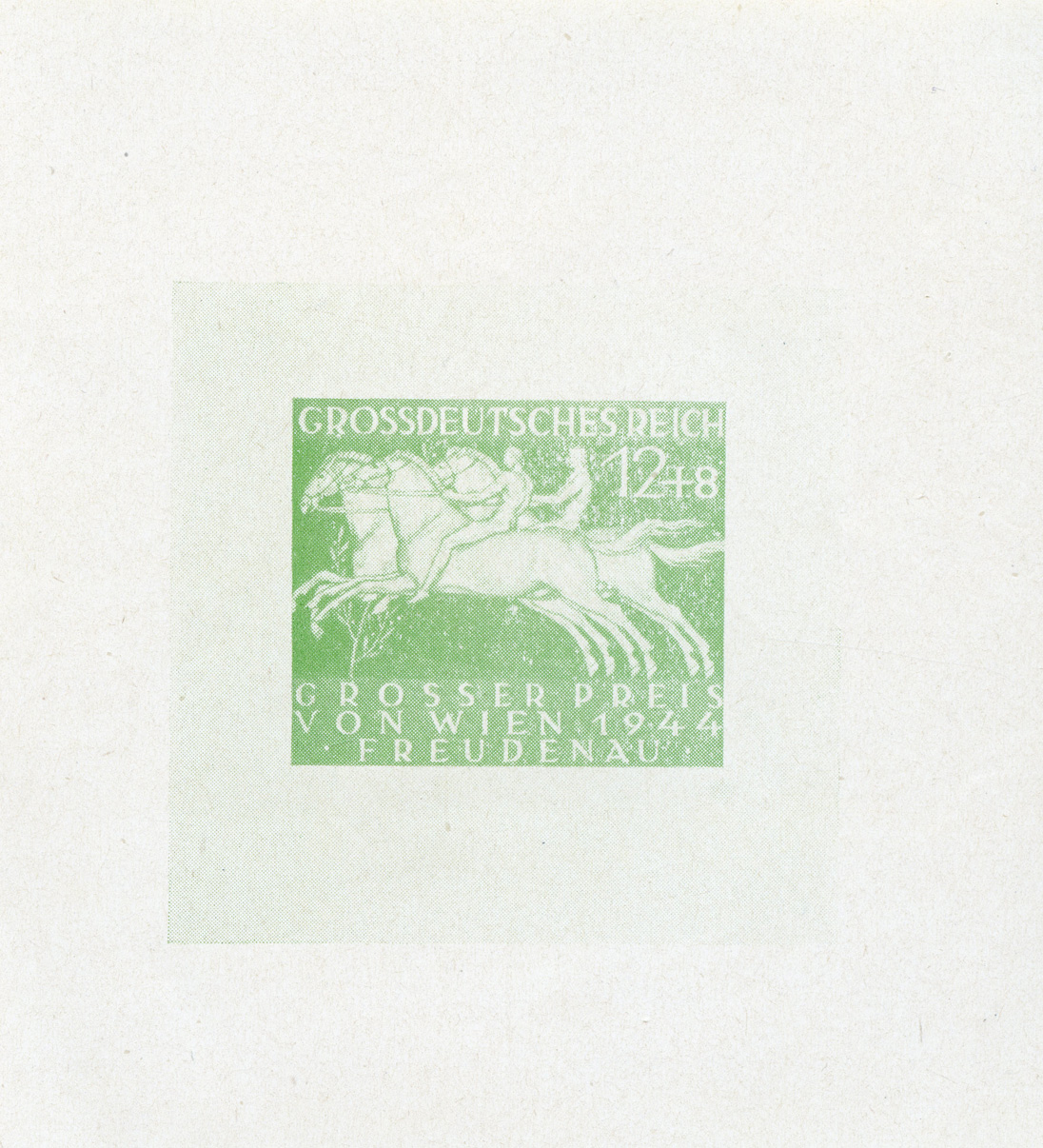
[Above: This is a prototype, presented to the postal authorities, but not approved. A very rare design and I've never seen another one. It says: 'Grosser Preis von Wien 1944 Freudenau' (Vienna Grand Prix 1944 Freudenau). Freudenau is in Austria.]
[Above: This is so neat! Let's see what it says:
'Internationale Riemer Rennwochen
Renner in Riem
Sattelplatz
Das Braunband von Deutschland
Diese Ehren gilt für den Sattelplatz zu den Rennen auf dem
Rennplatz in Riem am 26. Juli 1942.
Nicht übertragbar!'
(International Riem Racing Weeks
Race in Riem
Saddle Place
The Brown Ribbon of Germany
This honor applies to the Saddle Place for the races at the
track in Riem on July 26, 1942.
Not transferable!)]
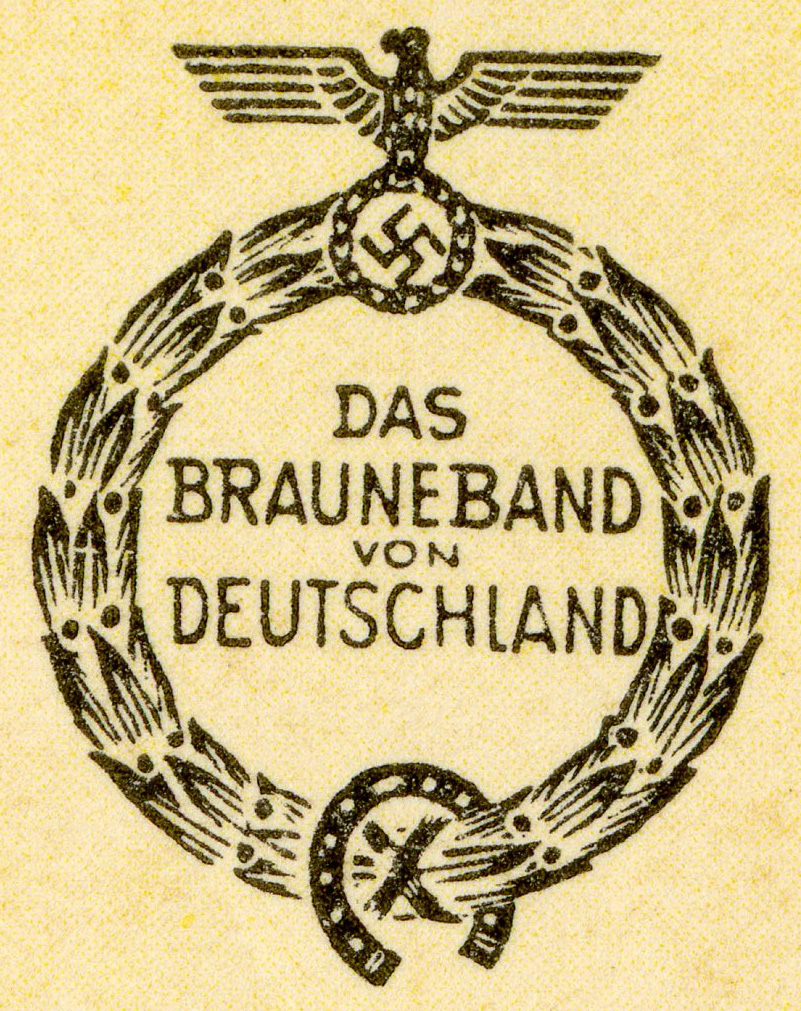
[Above: Close-up of eagle.]
[Above: Reverse of ticket.]
[Above: A fairly rare postcard that took place in 'Hoppegarten (Berlin)' for the 'Grosser Preis der Reichshauptstadt' (Grand Prix of the Reich Capital) on September 14, 1941'.]
[Above: Reverse.]
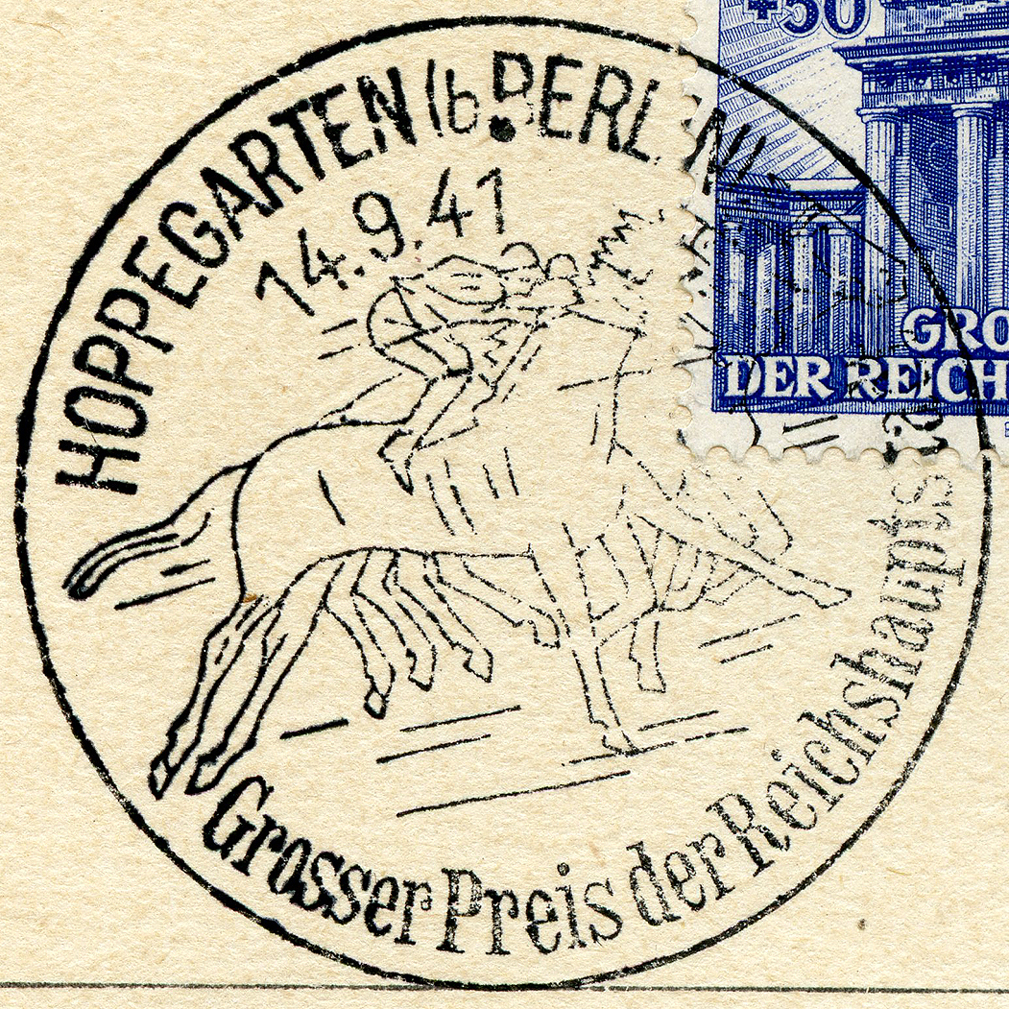
[Above: Cancel close-up.]

[Above: This is a a large advertising stamp, it says:
'Hengstmarkt
Körung-Prämiierung
29-31. Okt. 1934 in Köln
Landesbauernschaft Rheinland (Hauptabteilung II).
(Stallion Market
Licensing Award
29-31 Oct. 1934 in Cologne
Rhineland State Farmers' Association (Main Department II)]

[Above: A German soldier sitting on a sled pulled by a reindeer in Norway, 1940/1941.]


[Above: Panzer-turtle!]


[Above: Sheep, of the animal variety.]

[Above: Here is the one and only elephant in the animals section. This is from 1933. Gosh, that old German script is impossible to read...]

[Above: What sort of animal is a snowman anyway? Hmm... Whatever it is this little girl should get away, it looks like a wild snowman and could bite her. We're not fooled by it wearing a Wehrmacht cap either!]
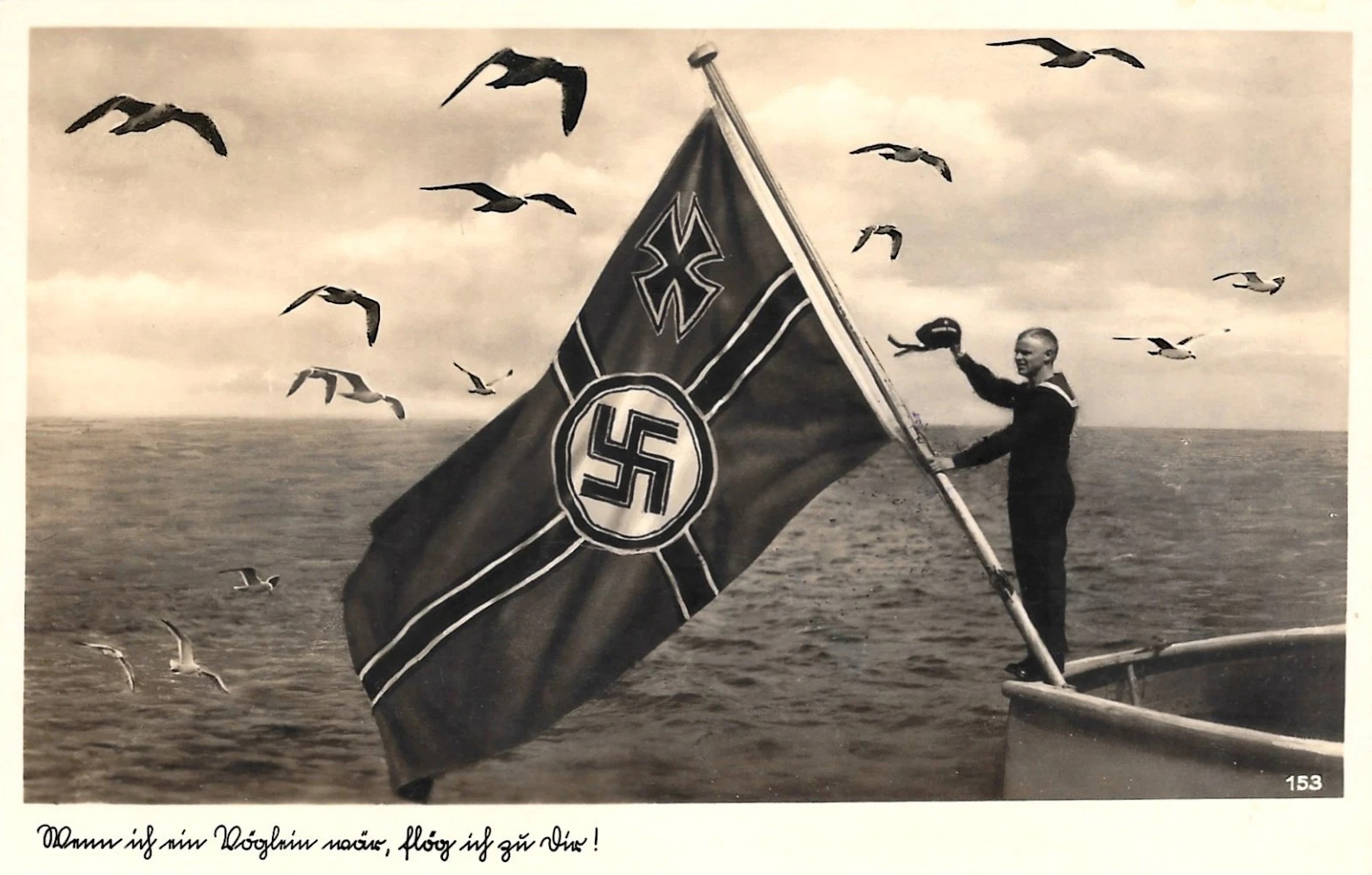
[Above: Here's a first entry of seagulls.]
[Above: It's remarkable they were able to train dogs to wear gas masks. They also had horse gas masks.]
[Above: German soldiers in gas masks placing carrier pigeons into a gas-proof chamber, probably during an anti-gas drill.]
[Above: A dog brings hot food to soldiers!]
[Above: Flying ace, The Red Baron and his dog, circa 1916.]
[Above: A German messenger dog leaps a trench near Sedan, Ardennes, France. May 1917.]
[Above: King Ludwig III visiting his troops while a Red Cross dog looks on.]
[Above: If you look closely these are the same two Red Cross soldiers in the above photo.]
[Above: This is labeled 'Völkerkrieg 1914/15' (War of Nations 1914/15) - 'Gefunden! (Found!).]
[Above: Does this count as animals? These rats are small compared to some of the ones I've heard about. Huge rats that have fed off corpses! It's true, the trenches were nightmarish.]
World War One


















